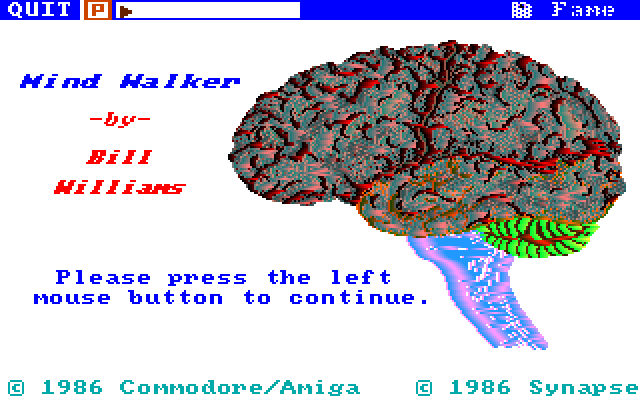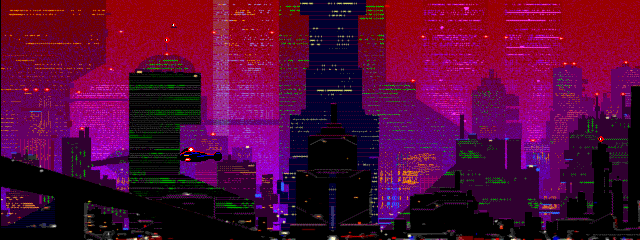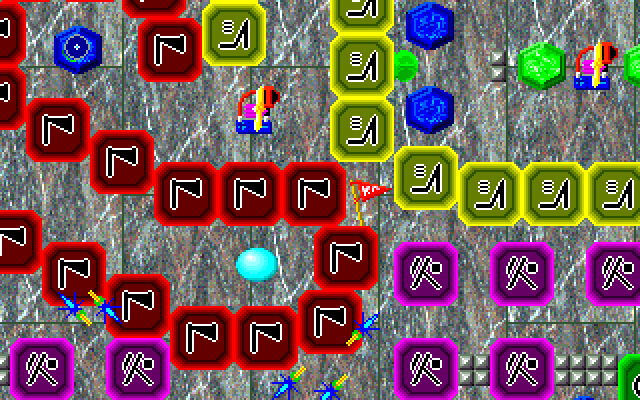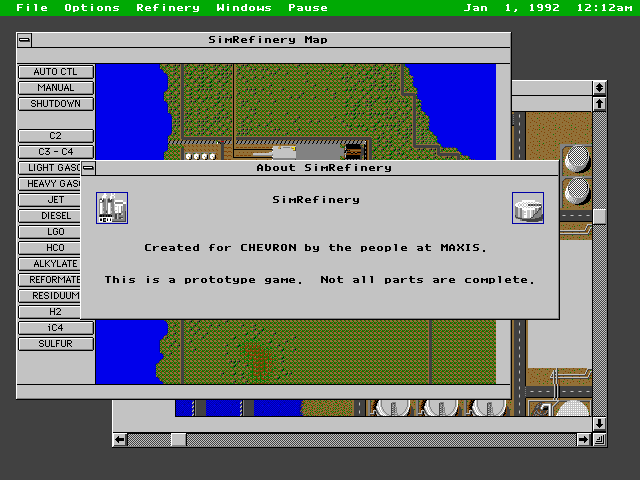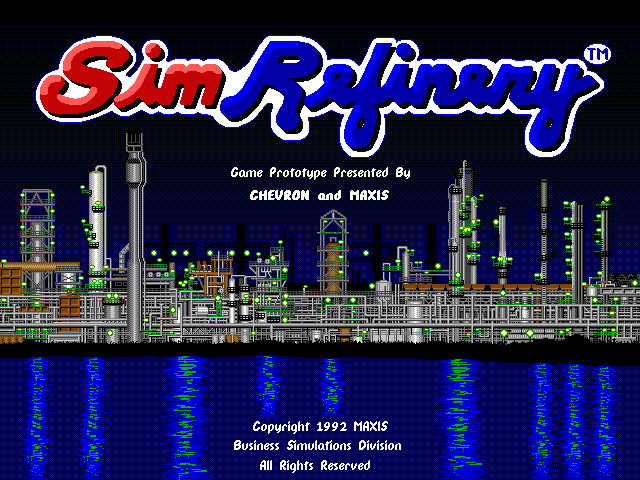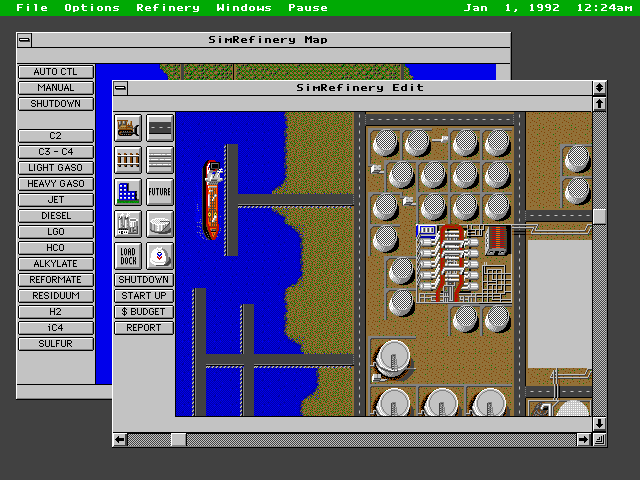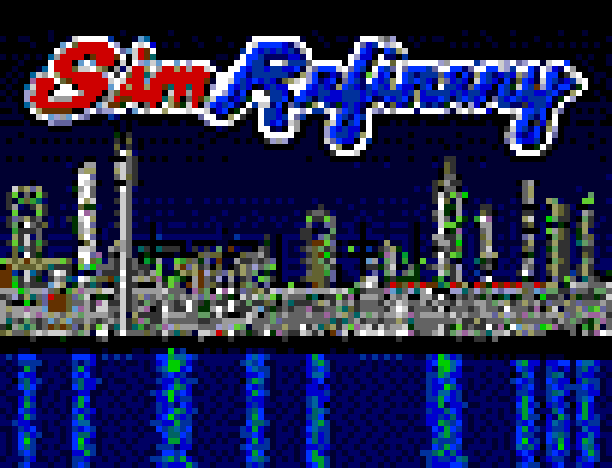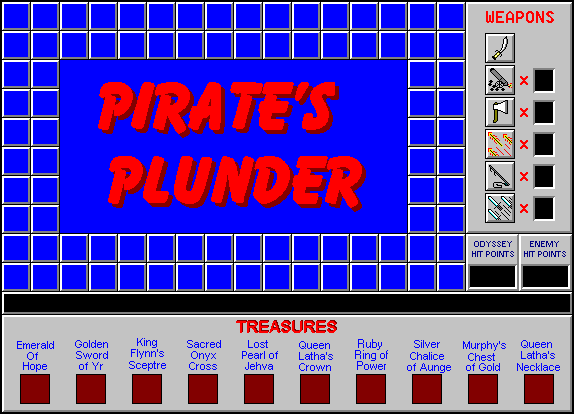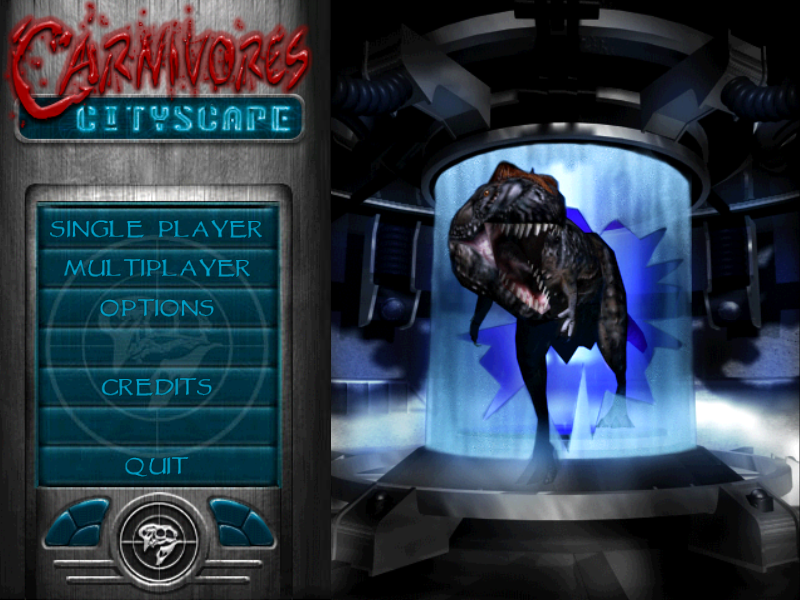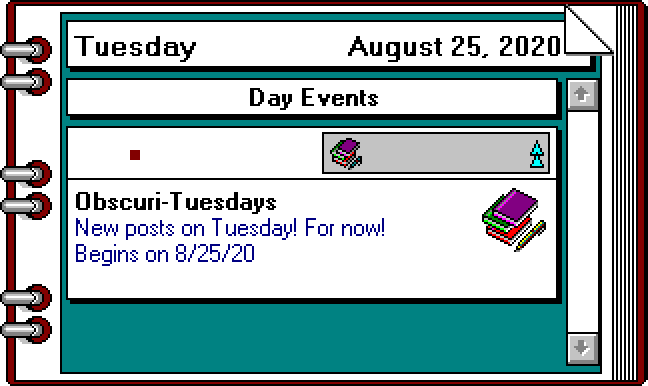
Modified screenshot from Delrina Daily Planner 3.0
Welcome back, and welcome to the start of something different for The Obscuritory!
For a long time, I’ve wanted to figure out a more stable writing schedule. One of the things I’ve always struggled with is working at a consistent pace. It’s been especially difficult this year, with new exciting sources of stress popping up every week. Part of the issue is that I tend to publish things as soon as I finish them, which leaves me on a constant treadmill to keep writing. At the same time, I recognize that as blog readers are waning in popularity and more people are going first to social media or YouTube, following a blog in 2020 is more difficult than it’s ever been, and it would help readers if I had a more reliable schedule.
So for the last couple weeks, I’ve been drafting a bunch of posts in advance instead! I have about a month’s worth of articles ready to go, which gives me a much longer runway to keep writing, or, if I need it, to take a break for a while. It also means I can set up a regular schedule, rather than just publishing posts as they’re completed.
From now on, new articles will be going up on Tuesday mornings! I’m calling this Obscuri-Tuesdays. (It was suggested that I do Thursdays instead so I could call it Obscursdays, but I like sharing them earlier in the week.) I hope that posting new articles at a regular time will make this blog a bit easier to follow!
This won’t be every week, but it will be on Tuesdays. I can’t promise that I’ll be able to keep up the pace of writing one article per week. Sometimes they take longer to write and research, or I’ll get sidetracked by other things in life. But I hope that taking a quick reset like this will help out in the long run. I’m proud to be able to do this blog on my own terms, and I’m excited about making it more consistent in a way that’ll be better for both me and you!
(On a side note, the fall is usually a slower period for this blog because I’m busy working on special events. Given that just about everything in the world has been canceled, I don’t think that’ll be an issue this year. Silver linings?)
The Obscuritory will continue tomorrow with an article about Mind Walker, a bizarre Amiga game by Bill Williams (Knights of the Crystallion) that takes place in the human brain. See you then – and see you on Tuesdays from here on out!



